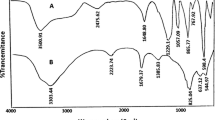Abstract
2-Methyl-5-phenylpentan-1-ol, commercially known as Rosaphen, is a fragrance used in the perfume and cosmetics industry for its scent of fruits and flowers. This work is focused on its two-step synthesis. At the first step, aldol condensation of cinnamaldehyde and propanal was carried out. The influence of used catalyst, reactants molar ratio, type, and amount of solvent was investigated. The most suitable conditions were the molar ratio of the starting materials equals 1:1, 36% aqueous solution of NaOH at the 0.1:1 molar ratio to cinnamaldehyde and methanol in a molar ratio of cinnamaldehyde to methanol of 1:13. Resulting 2-methyl-5-phenylpenta-2,4-dienal was hydrogenated using different Ru/C and Ni/SiO2 catalysts. The influence of catalyst type and amount, reaction temperature, and hydrogen pressure on the reaction course was studied. Rosaphen in concentration about 97% in final reaction mixture was obtained using hydrogen pressure 10 MPa, temperature 120 °C, and 10 wt% of Ni/SiO2 catalyst.






Similar content being viewed by others
Data availability
Data transparency.
Code availability
Not applicable.
References
Kawasaki M, Toyooka N, Saka T, Goto M, Matsuya Y, Kometani T (2010) Lipase-mediated preparation of optically active isomers of Rosaphen. J Mol Catal B Enzym 67:135–142
Lee YW, Gopalakrishnan G, Man SFP, Noujaim AA (1987) Radioiodinated aliphatic amines as potential pulmonary imaging agents. J Label Comp Radiopharm 6:609–620
Santini C, Ball RG, Berger GD (1994) Absolute stereochemistry of the squalene synthase inhibitor zaragozic acid C. J Org Chem 59:2261–2266
Ciao J, Perlmutter P (2013) ”One-pot” reductive lactone alkylation provides a concise asymmetric synthesis of chiral isoprenoid target. Org Lett 15:4327–4329
Manojveer S, Salahi S, Wendt OF, Johnoson MT (2018) Ru-catalyzed cross-dehydrogenative coupling between primary alcohols to guerbet alcohol derivatives: with relevance for fragrance synthesis. J Org Chem 83:10864–10870
Matteoli U, Beghetto V, Scrivanti A, Aversa M, Bertoldini M, Bovo S (2011) An alternative stereoselective synthesis of (R)- and (S)-rosaphen via asymmetric catalytic hydrogenation. Chirality 23:779–783
Colombo D, Brenna E, Gatti FG, Ghezzi MC, Monti D, Parmeggiani F, Tentori F (2019) Chemoselective biohydrogenation of alkenes in the presence of alkynes for the homologation of 2-alkynals/3-alkyn-2-ones into 4-alkynals/alkynols. Adv Synth Catal 361:2638–2648
Kaithal A, van Bonn P, Hoelscher M, Leitner W (2020) Manganese(I)-catalyzed β-methylation of alcohols using methanol as C1 source. Angew Chem 59:215–220
Kaithal A, Schmitz M, Hoelscher M, Leitner W (2019) Ruthenium(II)-catalyzed β-methylation of alcohols using methanol as C1 source. ChemCatChem 11:5287–5291
Ong DY, Yen Z, Yoshii A, Revillo JI, Takita R, Chiba S (2019) Controlled reduction of carboxamides to alcohols or amines by zinc hydrides. Angew Chem 58:4992–4997
Pagano AR, Frank WC, Jubian V (2001) Fragrance Materials. US6310033B1
Kuhn W, Wohrle I, Dilk E, Ewering C, Mampel J, Krohn M, Zinke H (2009) Omega-cyclohexylalkan-1-oles and use thereof as antimicrobial actives to combat body odor. WO2009101216A2
Funding
The authors did not receive support from any organization for the submitted work.
Author information
Authors and Affiliations
Contributions
Conceptualization, Methodology, Writing: [IP]; Formal analysis and investigation: [LR]; Supervision: [LC].
Corresponding author
Ethics declarations
Conflict of interest
The authors have no conflicts of interest to declare that are relevant to the content of this article.
Additional information
Publisher's Note
Springer Nature remains neutral with regard to jurisdictional claims in published maps and institutional affiliations.
Rights and permissions
About this article
Cite this article
Paterova, I., Reitmaierova, L. & Cerveny, L. Rosaphen synthesis: homogeneously catalyzed aldol condensation of cinnamaldehyde or hydrocinnamaldehyde with propanal followed by hydrogenation over ruthenium and nickel supported catalysts. Reac Kinet Mech Cat 135, 71–82 (2022). https://doi.org/10.1007/s11144-021-02123-4
Received:
Accepted:
Published:
Issue Date:
DOI: https://doi.org/10.1007/s11144-021-02123-4




